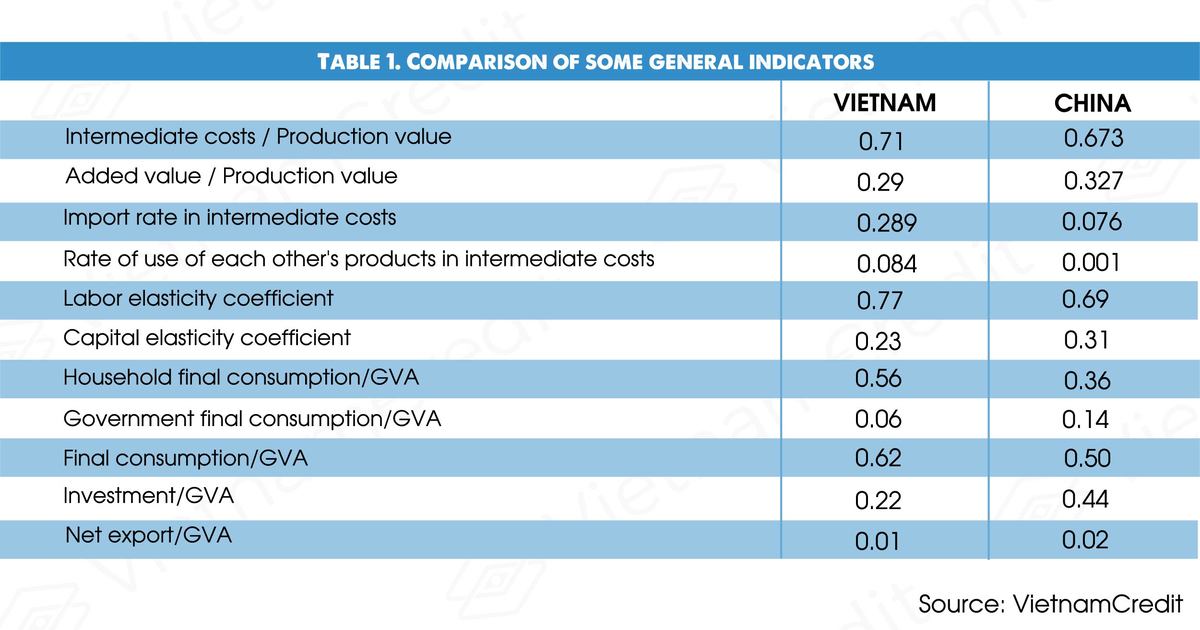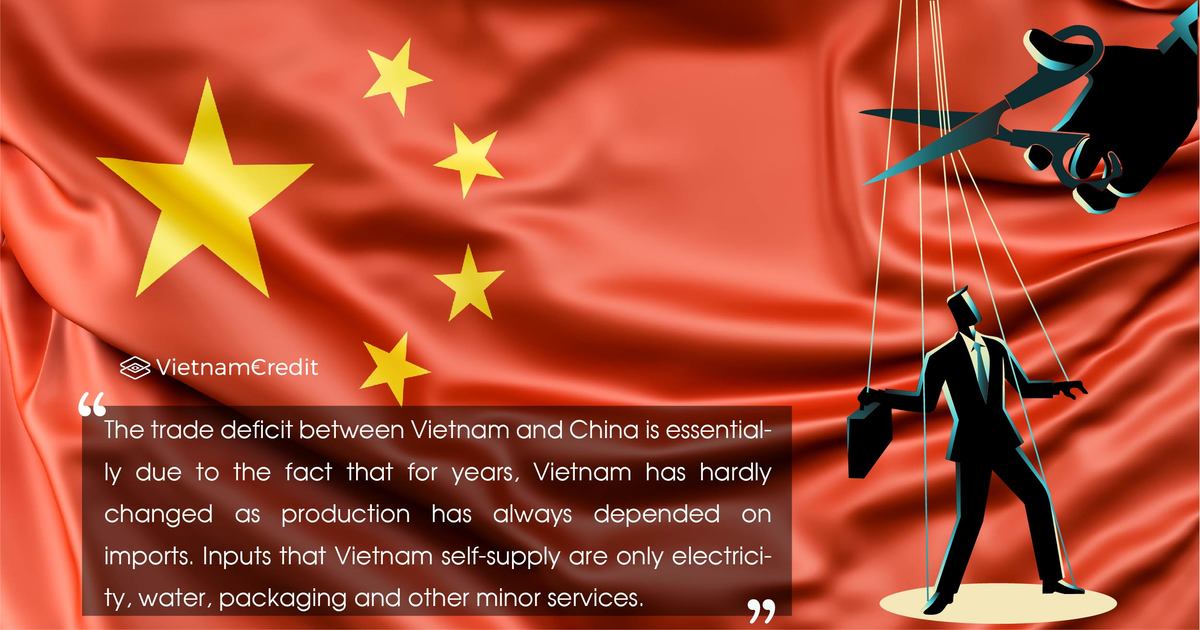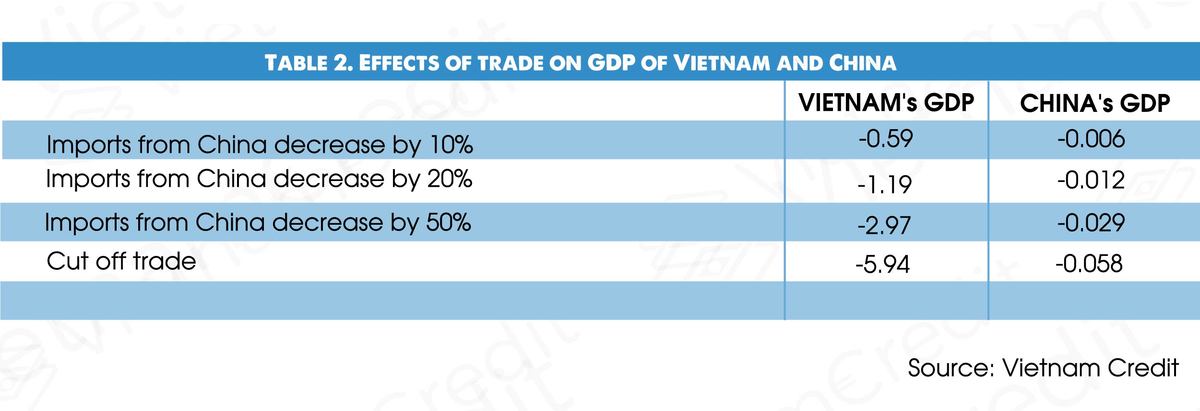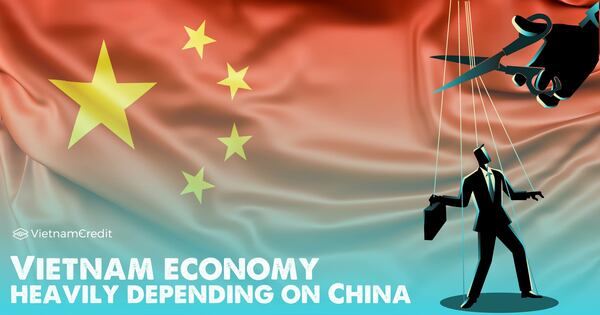The ratio of imported input products in Vietnam's intermediate costs is much larger than that of China (0.29 compared to 0.08)
China is the second largest
economy in the world and shares a border of 1.281km with Vietnam. Trade relation between the two countries is a necessity and if there is a right strategy, it will be beneficial for the development of both countries.
However, in this relationship, Vietnam has always suffered from a trade deficit and the situation is more and more serious. The reason behind this is that Vietnam has hardly changed for years as production always depends on imported inputs.
Less efficient
Comparing some economic indicators between Vietnam and China based on the input-output (I/O) inter-sectoral balance sheet of the two countries (Table 1) shows that out of 100 dong of production value, China creates 32 dongs worth of value added, while Vietnam creates only 29 dongs. This ratio indicates that Vietnam's production is not as efficient as China, or in other words, it is more of an outsourcing economy than China.

The ratio of imported input products in Vietnam's intermediate costs is much larger than that of China (0.29 compared to 0.08), which means China produces more products that support intermediate costs in the manufacturing process.
In the Vietnamese economy, in addition to the basic products including electricity and water, there are very few supporting products involved in intermediate costs in their production process. This shows that the spread from the last demand to the supply is lower than that to imports.
Table 1 also shows that in the trade relation between the two countries, in terms of production, there are also very clear and quite large differences. Of Vietnam's intermediary costs, 8% of the inputs are imported from China while only 0.1% of China’s input is imported from Vietnam. This partly indicates that the importance of imported products from China to Vietnamese production is much larger than the opposite, and this dependence is worth the attention.
Regarding the coefficient of elasticity of labor and capital between the two countries through the inter-sectoral balance sheet, it can be seen that Vietnam needs a much higher amount of capital than China to create growth.
There seems to be a paradox that the ratio of investment to gross value added (GVA) of Vietnam is much lower than that of China (22% compared to 44%), but its economic growth is still high.

The average growth rate of Vietnam in the period 2010-2015 was about 6.1% while that of China in this period was estimated at 7%. This can only be explained by the fact that Vietnam's total factor productivity (TFP) was higher than China, but that seems to be another paradox. So, which factors affect the total factor productivity? Is Vietnam's growth based too heavily on the FDI sector?
In terms of the final demand factors, it can be seen that household final consumption to GVA ratio in Vietnam is 20 percentage points higher than China (56% compared to 36%), while Chinese government's final consumption is 8 percentage points higher than Vietnam (14% and 6% respectively).
However, China's final consumption to GVA ratio is still quite low compared to Vietnam (50% versus 62%). The proportion of net exports/GVA rate of Vietnam is also higher than that of China. Overall, China's growth is largely based on capital. The investment to GVA ratio of China is very high, accounting for about 44%, while this rate in Vietnam is only 22%.
This, if taking place for a long time, can make the economy more vulnerable once the revenue from ownership is in trouble and saving is always smaller than investment.
Effects of trade on GDP

The assumption of scenarios when there is trade vulnerability between the two countries (Table 2) shows that Vietnam is much more affected than China. Table 2 makes assumptions as to how the decline in trade with China will, under current conditions, affect
Vietnam’s economic growth. In the worst case, GVA / GDP of Vietnam may decrease by 5.9%.
This shows that Vietnam has deepened its dependence on China, and now the concept of "escaping from China" seems to be unrealistic. It can be said that the trade deficit between Vietnam and China is essentially due to the fact that for years, Vietnam has hardly changed as production has always depended on imports. Inputs that Vietnam self-supply are only electricity, water, packaging and other minor services.
(1) GDP = GVA + Product taxes - Product subsidies
Henry Tran - VietnamCredit


























































